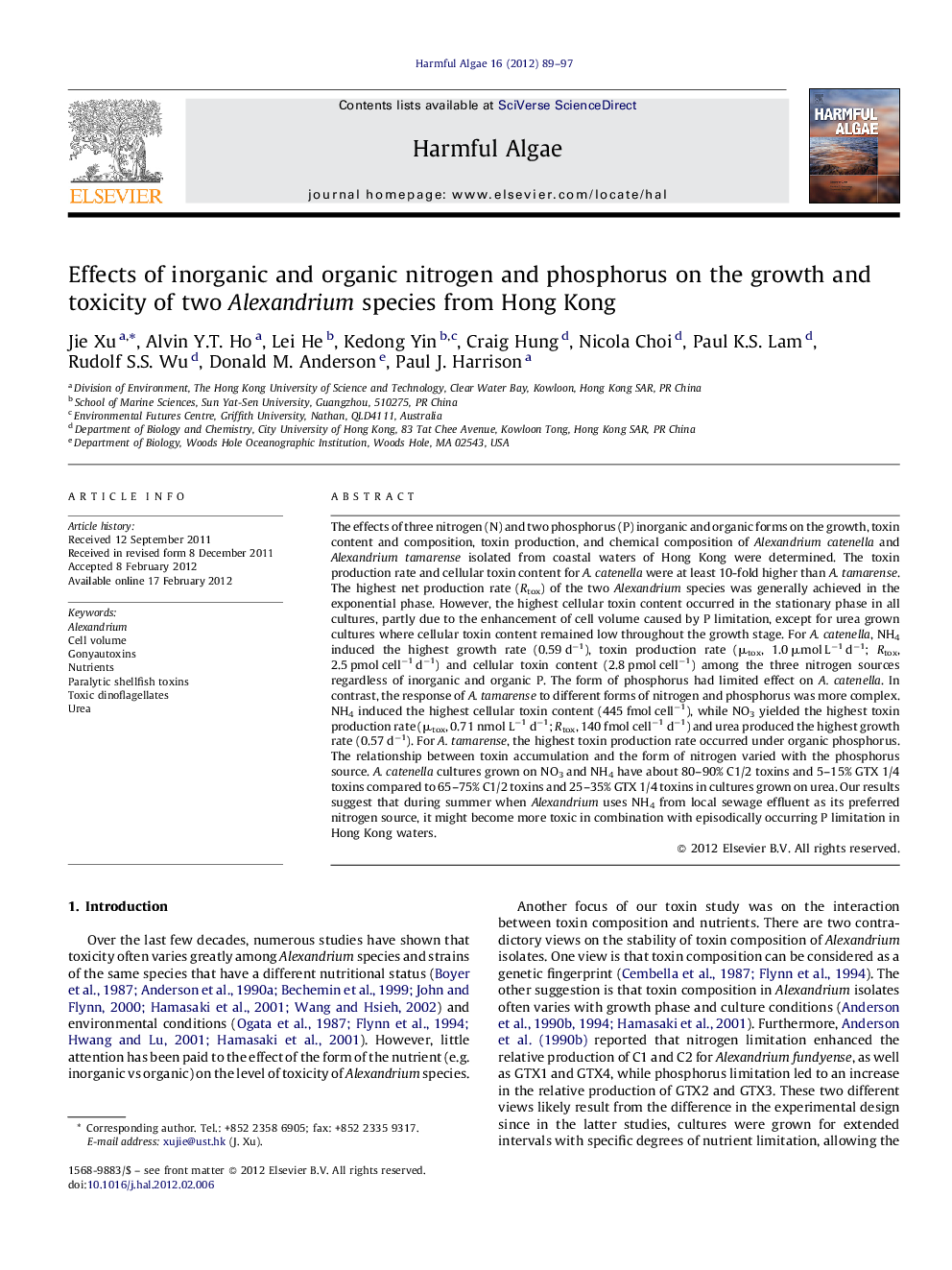| کد مقاله | کد نشریه | سال انتشار | مقاله انگلیسی | نسخه تمام متن |
|---|---|---|---|---|
| 4545620 | 1626954 | 2012 | 9 صفحه PDF | دانلود رایگان |

The effects of three nitrogen (N) and two phosphorus (P) inorganic and organic forms on the growth, toxin content and composition, toxin production, and chemical composition of Alexandrium catenella and Alexandrium tamarense isolated from coastal waters of Hong Kong were determined. The toxin production rate and cellular toxin content for A. catenella were at least 10-fold higher than A. tamarense. The highest net production rate (Rtox) of the two Alexandrium species was generally achieved in the exponential phase. However, the highest cellular toxin content occurred in the stationary phase in all cultures, partly due to the enhancement of cell volume caused by P limitation, except for urea grown cultures where cellular toxin content remained low throughout the growth stage. For A. catenella, NH4 induced the highest growth rate (0.59 d−1), toxin production rate (μtox, 1.0 μmol L−1 d−1; Rtox, 2.5 pmol cell−1 d−1) and cellular toxin content (2.8 pmol cell−1) among the three nitrogen sources regardless of inorganic and organic P. The form of phosphorus had limited effect on A. catenella. In contrast, the response of A. tamarense to different forms of nitrogen and phosphorus was more complex. NH4 induced the highest cellular toxin content (445 fmol cell−1), while NO3 yielded the highest toxin production rate (μtox, 0.71 nmol L−1 d−1; Rtox, 140 fmol cell−1 d−1) and urea produced the highest growth rate (0.57 d−1). For A. tamarense, the highest toxin production rate occurred under organic phosphorus. The relationship between toxin accumulation and the form of nitrogen varied with the phosphorus source. A. catenella cultures grown on NO3 and NH4 have about 80–90% C1/2 toxins and 5–15% GTX 1/4 toxins compared to 65–75% C1/2 toxins and 25–35% GTX 1/4 toxins in cultures grown on urea. Our results suggest that during summer when Alexandrium uses NH4 from local sewage effluent as its preferred nitrogen source, it might become more toxic in combination with episodically occurring P limitation in Hong Kong waters.
► Toxicity of 2 Alexandrium sp. grown on inorganic and organic N and P was determined.
► NH4 induced the highest growth rate and toxicity for Alexandrium catenella.
► The form of phosphorus had little effect on the growth and toxicity of A. catenella.
► Toxicity of A.tamarense varied with inorganic and organic form of N and P.
► Alexandrium growing on NH4 from sewage under P-limited situations may be more toxic.
Journal: Harmful Algae - Volume 16, April 2012, Pages 89–97